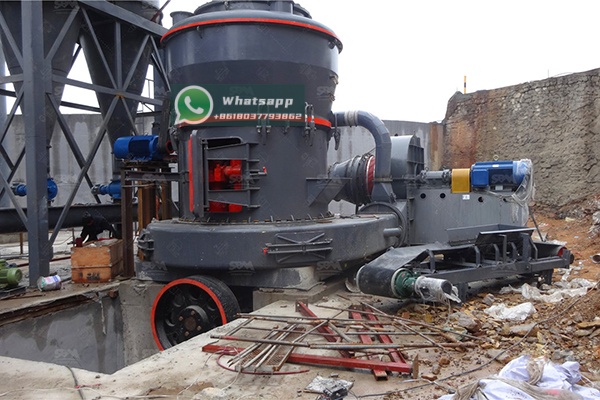In the realm of industrial powder processing, grinding efficiency and precision are paramount. At Shanghai Zenith Machinery Co., Ltd., we have dedicated years of research and development to perfecting the engineering of our grinding equipment. A critical, yet often overlooked, component that significantly contributes to the performance and reliability of our Raymond Mills is the tension device. This article delves into the sophisticated engineering behind this vital mechanism and its role in achieving superior grinding outcomes.
The Raymond Mill operates on the principle of grinding material between a rotating roller and a stationary grinding ring. The heart of this process lies in the application of consistent and optimal pressure. The tension device is the engineered system responsible for applying and maintaining this crucial grinding force. It ensures that the grinding rollers are pressed firmly against the grinding ring, enabling efficient pulverization of the feed material into a fine powder. Without a precisely calibrated tensioning system, the mill would suffer from inconsistent product fineness, reduced throughput, and accelerated wear on grinding components.

The primary functions of the tension device can be summarized as follows:
The traditional design of a tension device in Raymond Mills often relied on large coil springs. While functional, this design had limitations in terms of precise adjustment and responsiveness to varying operational conditions. At Shanghai Zenith, our engineering team has innovated upon this foundational concept.
Our modern Raymond Mills feature an advanced tensioning system that incorporates high-strength, precision-calibrated springs coupled with a robust mechanical linkage. This system is designed for easy external adjustment, allowing operators to fine-tune the grinding pressure without disassembling the mill. This adjustability is key to processing materials with different hardness and grindability characteristics. For instance, a harder material may require increased tension for effective grinding, while a softer material might need less to prevent over-grinding and excessive energy consumption.
The materials used in our tension springs are subjected to rigorous testing for fatigue resistance and durability. They are manufactured to withstand constant cyclical loading under high-stress conditions, ensuring long-term reliability and consistent performance. Furthermore, the entire assembly is designed for easy maintenance and replacement, aligning with our philosophy of creating user-centric machinery.
The direct correlation between the tension device and the final product is undeniable. An optimally tensioned mill delivers a uniform particle size distribution, which is a critical quality parameter in many industries. Inconsistent tension leads to uneven roller pressure, resulting in a wider particle size range and a lower proportion of the desired fine fraction.
Moreover, the tension device plays a significant role in energy efficiency. When the grinding pressure is correctly set, the mill operates at its peak efficiency, consuming the minimum amount of energy required to achieve the target fineness. An improperly adjusted device can lead to slippage, where the rollers fail to grip the material effectively, causing a surge in power consumption without a corresponding increase in output.
Our commitment to excellence is embodied in our product range. For operations seeking the proven reliability and efficiency of a modern Raymond Mill, we highly recommend our YGM4121 Raymond Mill. This model represents the culmination of our engineering expertise, featuring a robust tension device that ensures stable and high-yield production.
| Model | Roller Quantity (pcs) | Max.Feed Size (mm) | Discharging Size (mm) | Capacity (t/h) |
|---|---|---|---|---|
| YGM4121 | 5 | 30 | 1.6-0.045 | 5-11 |

While the Raymond Mill remains a cornerstone of powder processing, technological advancements have led to the development of even more efficient grinding systems. For applications demanding ultra-fine powders, the engineering principles are taken to a new level. The tension and grinding pressure in these mills are managed through more complex, often hydraulic or pneumatic, systems integrated with advanced control logic.
Shanghai Zenith is at the forefront of this innovation. Our LUM Ultrafine Vertical Mill is a prime example. It integrates multiple functions—grinding, drying, classifying, and conveying—into a single, compact unit. Instead of a traditional spring-based tension system, it may utilize a sophisticated hydraulic system to control the grinding pressure, allowing for real-time adjustments and unparalleled control over the final product’s fineness. This makes it an ideal solution for high-value, superfine powder production.
| Model | Main machine power (kW) | Capacity (t/h) | Size distribution D97 (μm) |
|---|---|---|---|
| LUM1525 | 220-250 | 1.6-11.5 | 5-30 |
| LUM1632 | 280-315 | 2.0-13.5 | 5-30 |
| LUM1836 | 355-400 | 2.3-15 | 5-30 |
The tension device in a Raymond Mill is far more than a simple spring; it is a critically engineered component that sits at the core of the mill’s performance, efficiency, and longevity. At Shanghai Zenith Machinery Co., Ltd., our deep understanding of this mechanism allows us to design and build grinding mills that deliver consistent, high-quality results while minimizing operational costs. From the robust and reliable YGM4121 Raymond Mill to the cutting-edge LUM Ultrafine Vertical Mill, our product portfolio is a testament to our commitment to engineering excellence in the field of industrial powder grinding. By focusing on the details, such as the precision of the tension device, we ensure that our customers are equipped with the best machinery to meet their production goals.
